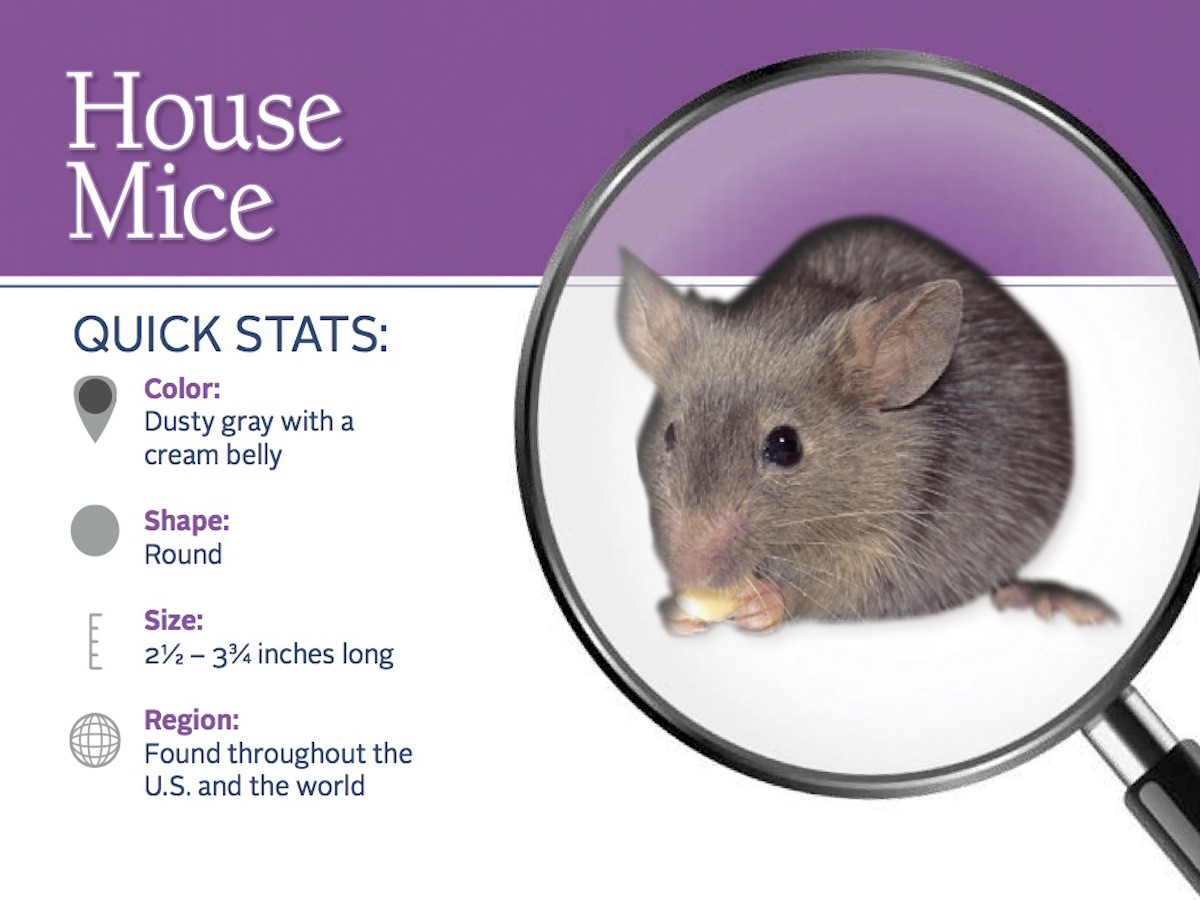Table Of Content

While these native species can sometimes get into homes and garages too, house mice are a much more common issue. “That’s the important thing I like to showcase — when people think of mice or rodents, they think of these pests in houses. But we have dozens of native mice species here in North Carolina that don’t come in our homes or come anywhere near our homes,” Cove said. Pest control costs are not insignificant, but they may be worth it to return the home to a safe and peaceful state. For the health and safety of everyone in the home, it’s important for a homeowner to be sure that mice are removed as soon as they become aware of the problem.
Get Rid of Food Sources and Nesting Materials

Typically, mice have an aversion to cinnamon, apple cider vinegar, dryer sheets, clove oil, peppermint, tea bags, mint toothpaste, ammonia, cloves, and cayenne pepper. Make a solution of apple cider vinegar and water, and put in a spray bottle. Spray around the perimeter of your house, as well as any indoor access points. Similarly, soak cotton balls with essential oils, and stick into any holes or entry points. Remember, these would need reapplying once the scent disappears.
What Are the Different Types of Mouse Traps?
Mice have been known to spread nasty diseases - such as Salmonella and Listeria - to humans through their urine, droppings and bedding. They often go after pet food, which can be in an easily chewable bag in the pantry or even left out for hours during the day. Don’t let the name fool you — the house mouse is an invasive species that is a pest to us in North America. The house mouse is a non-native mouse species that lives on all seven continents.
How Do You Identify a Mouse Infestation?
Start your mouse control efforts by identifying, reducing, and removing possible food and water sources around your home and yard. If mice are having their food and water needs met on your property, it will be hard to get them to leave. You’ve filled in all of the holes and cleared up your garage of any debris and random boxes laying around.
Find Pest Control Providers Near You
If there are additional conditions around your home that are especially inviting to rodents (like bird feeders, compost, and water sources), they're not likely to go away on their own. Pepper Moran is a pest control expert with over five years experience in educating homeowners on affordable and earth-friendly ways to protect their homes from pests. When placing traps and bait, you need to check on them every day or two. Replace as needed, and there’s no harm in using both methods if you have a larger infestation. The goal is to get rid of the mice using any method that works, and a combination of methods will work best.
How to Get Rid of Mice in Your Home
Mouse traps are effective tools for capturing and exterminating individual rodents. Classic wooden snap traps, electronic traps, and live traps are all viable options. Place traps along pathways rodents travel and use an attractant such as food or nesting material. With live traps, you can entice rodents out of walls and into traps that close when the rodent enters with bait. The key to doing this successfully is understanding the rodent's patterns and behaviors.
Mice - Trap - Insect & Pest Control
They’ll need to cover the dryer vent or any other exterior vents with ¼-inch hardware cloth and make sure to seal up any spaces around window- or wall-mounted air conditioners. Mice have sharp teeth that are capable of chewing through packaging easily, so as an added precaution, it may be worth transferring food items like cereal into airtight containers. ” the simplest explanation is that they were able to find a way inside. No matter what method a homeowner turns to for mouse control, as long as mice have easy access to the home, the problem is likely to persist.
Use this to your advantage by placing used kitty litter in areas where mice are known to hide. Mice seek out the darkest spots, such as inside air ducts and wall cavities to set up residence. Identifying what type of rodent has taken up residence in your home or yard is the first step towards evicting... When temperatures begin to drop in the fall, mice start hunting for a warm place to spend the winter (and multiply!). As the Homes Content Editor, Cynthia Lawrence covers all things homes, interior decorating, and garden-related.
The bait works well on mice and rats, and it comes with a four pound pail of bait. Vents, drains or pipes may also allow for easy entry, so make sure that you inspect all three of these common entryways. If there is no food or water, it will be harder for mice to live in the space. Living with the animal in your house means cleaning their droppings. But the thing is how you can be sure that they are of a mouse.
Avoid using caulk, rubber or plastic fillers as mice can chew through these. You should also make sure your food containers are sealed and kept in a cupboard where rodents can't reach, particularly boxes of cereal, bread, pasta and pet food. Small cracks in a foundation, holes in siding, and gaps around windows and doors can all serve as entry points for rodents.
These devices lure mice in with an enticing smell and offer a block of green, edible bait that's laced with poison. And the more I thought about it, these posed a far crueler fate for my unwanted intruders than even snap traps. They also mean dead and decaying mice scattered about your home. Traps should be placed in areas where there is evidence of rodent activity, and will be more effective if they are put inside tunnels or set directly alongside walls. Always use gloves when handling traps, as rodents tend to avoid anything with a human scent.
Bait can be placed inside of the box to lure in the mouse, too. Once this is done, cover the top of the box with plastic wrap. The plastic wrap will act as a window into the box and will prevent the mice from escaping. If the infestation has gotten bad, you’ll need to be on top of your cleaning. Sure, there are some foods that mice like more than others, but for the most part, mice will eat anything.
How to get rid of mice in your house - The Cincinnati Enquirer
How to get rid of mice in your house.
Posted: Mon, 25 Dec 2023 08:00:00 GMT [source]
And if you’ve seen one mouse, there’s a very high probability that there is more than one rodent running through your home. The best way to get rid of mice is to fully understand their habits and why they’re in your home in the first place. They are trained in mouse control and will have access to a range of professional use rodenticides which are not available to the public.
Everything to Know About House Mice - Family Handyman
Everything to Know About House Mice.
Posted: Fri, 22 Mar 2024 07:00:00 GMT [source]
One thing mice really seem to dislike is the heat of cayenne peppers. Most hot pepper species contain a compound called capsaicin, which produces a burning sensation in the mouth and eyes of mammals. Because of this discomfort, it is often used as an animal deterrent for many rodent species.
Inevitably there is a mouse caught now and then, especially in the fall when temperatures cool and they look for warmth and food. It's very difficult to find a place where they may be entering because the nasty little critters can climb, too. Bird feeders help to draw them into our yard, too, but we love to feed and watch the birds. The first step is to make 100% sure you’ll dealing with mice, not juvenile rats or bats or another critter because the control methods are different. There are many animals that can be scratching inside your walls, including squirrels.
“This is not an issue where people are irresponsible with food storage or have gaping holes on the outside of their homes. It’s an ubiquitous issue and will happen to pretty much everyone at some point. This fall, you might find some tiny creatures stirring inside your house.

No comments:
Post a Comment